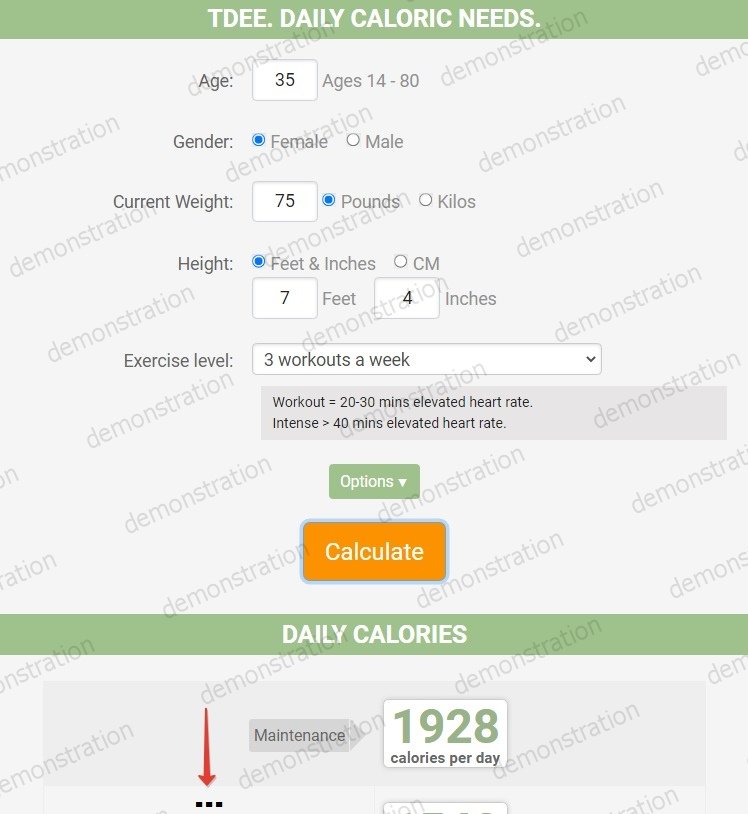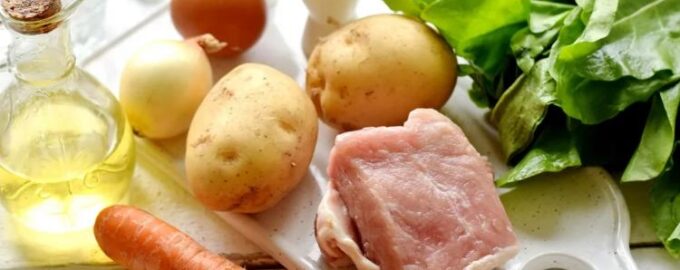White Currants, Raw – Nutrition Facts
Protein
Fats
Carbs
kcal
Protein
Fats
Carbs
kcal
White currants are a good source of vitamin C, with a 100-gram serving providing over 40% of the daily recommended intake. Vitamin C is important for immune function, skin health, and wound healing.
| Name | Amount | Unit |
|---|---|---|
| Water | 84 | g |
| Energy | 56 | kcal |
| Energy | 234 | kJ |
| Protein | 1.4 | g |
| Total lipid (fat) | 0.2 | g |
| Ash | 0.66 | g |
| Carbohydrate, by difference | 13.8 | g |
| Fiber, total dietary | 4.3 | g |
| Sugars, total including NLEA | 7.37 | g |
| Sucrose | 0.61 | g |
| Glucose | 3.22 | g |
| Fructose | 3.53 | g |
| Calcium, Ca | 33 | mg |
| Iron, Fe | 1 | mg |
| Magnesium, Mg | 13 | mg |
| Phosphorus, P | 44 | mg |
| Potassium, K | 275 | mg |
| Sodium, Na | 1 | mg |
| Zinc, Zn | 0.23 | mg |
| Copper, Cu | 0.107 | mg |
| Manganese, Mn | 0.186 | mg |
| Selenium, Se | 0.6 | µg |
| Vitamin C, total ascorbic acid | 41 | mg |
| Thiamin | 0.04 | mg |
| Riboflavin | 0.05 | mg |
| Niacin | 0.1 | mg |
| Pantothenic acid | 0.064 | mg |
| Vitamin B-6 | 0.07 | mg |
| Folate, total | 8 | µg |
| Folic acid | 0 | µg |
| Folate, food | 8 | µg |
| Folate, DFE | 8 | µg |
| Choline, total | 7.6 | mg |
| Vitamin B-12 | 0 | µg |
| Vitamin B-12, added | 0 | µg |
| Vitamin A, RAE | 2 | µg |
| Retinol | 0 | µg |
| Carotene, beta | 25 | µg |
| Carotene, alpha | 0 | µg |
| Cryptoxanthin, beta | 0 | µg |
| Vitamin A, IU | 42 | IU |
| Lycopene | 0 | µg |
| Lutein + zeaxanthin | 47 | µg |
| Vitamin E (alpha-tocopherol) | 0.1 | mg |
| Vitamin E, added | 0 | mg |
| Vitamin D (D2 + D3), International Units | 0 | IU |
| Vitamin D (D2 + D3) | 0 | µg |
| Vitamin K (phylloquinone) | 11 | µg |
| Fatty acids, total saturated | 0.017 | g |
| SFA 4:0 | 0 | g |
| SFA 6:0 | 0 | g |
| SFA 8:0 | 0 | g |
| SFA 10:0 | 0 | g |
| SFA 12:0 | 0 | g |
| SFA 14:0 | 0 | g |
| SFA 16:0 | 0.01 | g |
| SFA 18:0 | 0.003 | g |
| Fatty acids, total monounsaturated | 0.028 | g |
| MUFA 16:1 | 0.001 | g |
| MUFA 18:1 | 0.028 | g |
| MUFA 20:1 | 0 | g |
| MUFA 22:1 | 0 | g |
| Fatty acids, total polyunsaturated | 0.088 | g |
| PUFA 18:2 | 0.053 | g |
| PUFA 18:3 | 0.035 | g |
| PUFA 18:4 | 0 | g |
| PUFA 20:4 | 0 | g |
| PUFA 20:5 n-3 (EPA) | 0 | g |
| PUFA 22:5 n-3 (DPA) | 0 | g |
| PUFA 22:6 n-3 (DHA) | 0 | g |
| Fatty acids, total trans | 0 | g |
| Cholesterol | 0 | mg |
| Alcohol, ethyl | 0 | g |
| Caffeine | 0 | mg |
| Theobromine | 0 | mg |
The nutrition facts are provided by the United States Department of Agriculture for White Currants (100 g). www.usda.gov
Use the «Food Nutrition Calculator» to find the calorie-count of over 14,000 different meals and foods quickly and easily.
Food Calorie Calculator
Screenshot

Use the weight converter to convert pounds to kilograms, ounces to grams and other metric to imperial weight conversions. Enter the weight in one of the text boxes and press the Convert button:
You can use the Calorie Calculator:
Screenshot
The Calorie Calculator for Weight Loss can help you determine how many calories you need to consume each day.
Introduction
White currants are a rare and often underappreciated variety of berries belonging to the Ribes family. Though closely related to red and black currants, they stand out with their translucent, pearl-like appearance and subtly sweet flavor. These berries are not only visually appealing but also nutritionally rich, making them a smart addition to a health-conscious diet.
Nutritional Value
Despite their small size, white currants offer a dense package of nutrients. A 100-gram portion contains about 56 calories and provides a good balance of carbohydrates, fiber, and micronutrients. Natural sugars contribute to their sweetness, while dietary fiber supports digestive health. White currants are particularly notable for their vitamin C content—approximately 41 mg per 100 g—which covers nearly 70% of the recommended daily intake. They also contain potassium, calcium, iron, and smaller amounts of vitamin K and magnesium.
Key Macronutrients
Carbohydrates make up the majority of calories in white currants, most of which come from natural fruit sugars. However, these sugars are balanced by a high fiber content, which slows down sugar absorption and supports digestive processes. Fat content is extremely low, and while the protein content is modest, every gram contributes to your overall daily intake, especially in plant-based diets.
Why Include It in Your Diet?
Adding white currants to your meals is a simple way to enhance your diet without adding many calories. They fit well into low-fat, high-fiber, and vitamin-rich diets. Their sweet, refreshing taste makes them an easy choice for both adults and children, especially when fresh fruit variety is limited. For those looking to improve their nutrient intake through natural foods, white currants offer a seasonal, local, and sustainable option in many temperate regions.
Health Benefits
White currants offer a number of potential health benefits thanks to their antioxidant and vitamin-rich composition. The high vitamin C content strengthens the immune system and protects cells from oxidative stress. Dietary fiber improves gut function and promotes satiety, which is helpful for weight management. The presence of potassium helps regulate blood pressure and supports heart health. Meanwhile, vitamin K and calcium contribute to bone strength, and antioxidants found in the fruit may have anti-aging and anti-inflammatory effects.
Comparison Table
| Nutrient | White Currants (100g) | Red Currants (100g) | Black Currants (100g) |
|---|---|---|---|
| Calories | 56 kcal | 56 kcal | 63 kcal |
| Carbohydrates | 13.8 g | 13.8 g | 15.4 g |
| Sugars | 7.4 g | 7.4 g | 7.3 g |
| Fiber | 4.3 g | 4.3 g | 6.8 g |
| Vitamin C | 41 mg | 41 mg | 181 mg |
| Potassium | 275 mg | 275 mg | 322 mg |
While black currants are richer in vitamin C and fiber, white currants offer a milder flavor and a similar mineral profile, making them a good alternative for those who prefer less tart fruits.
How to Consume?
White currants can be eaten fresh by the handful or served as a topping for breakfast bowls and yogurt. They also blend well into smoothies and fruit salads. Some prefer to mash them lightly and use the juice in homemade drinks or dressings. Their natural pectin content makes them ideal for jams and jellies, even with minimal added sugar.
Culinary Uses
In the kitchen, white currants are valued not just for their flavor but also for their appearance. They are often used in desserts like tarts, compotes, and cakes, where their brightness provides contrast both visually and in taste. Chefs sometimes use them as a garnish for cheese boards or pastries, adding a touch of elegance. Their gentle acidity also pairs surprisingly well with poultry and fish, making them a versatile ingredient in both sweet and savory recipes.
Fun Facts
- White currants are not a separate species—they are a color variant of red currants.
- They are often more sweet and less tart than red currants.
- In Europe, especially in countries like Germany and the Netherlands, white currants are a traditional ingredient in desserts and syrups.
- The bushes are cold-hardy and can grow in temperate climates with minimal care.
Conclusion
White currants may not dominate supermarket shelves, but they hold their own as a nutritious, tasty, and beautiful fruit. With strong levels of vitamin C, a solid amount of fiber, and multiple culinary uses, they offer both health benefits and flavor variety. Whether eaten fresh or cooked, white currants are a unique and wholesome addition to a balanced diet.
Sources
- USDA FoodData Central
- Healthline – “Currants: Nutrition, Benefits, and Uses”
- European Journal of Nutrition
- The Berry Grower’s Handbook
- NutritionData – Self.com

